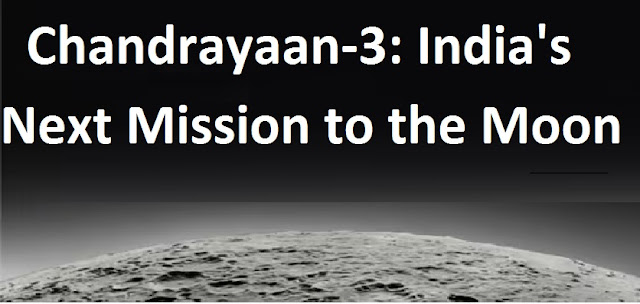Introduction:
Chandrayaan-3 is an upcoming space mission by the Indian Space Research Organization (ISRO). Building on the success of its predecessor, Chandrayaan-2, this new mission aims to further explore the lunar surface and expand our understanding of Earth's closest celestial neighbor. In this article, we will delve into the details of Chandrayaan-3, discussing its objectives, key components, and anticipated scientific discoveries.
Mission Objectives:
The primary objective of Chandrayaan-3 is to conduct extensive scientific research on the moon. This includes studying the moon's surface, mineralogy, presence of water, and potential resources. By analyzing the data, scientists hope to gain valuable insights into the moon's formation and evolution, as well as its potential use for future space exploration missions.
Key Components:
Chandrayaan-3 consists of various crucial components that work together to accomplish its mission objectives. The spacecraft comprises the Orbiter, lander, and rover, each fulfilling specific roles.
Orbiter:
The Orbiter is responsible for orbiting the moon and capturing high-resolution images of the lunar surface. Equipped with various scientific instruments, it will map the moon, analyze its mineral composition, and observe any changes over time.
Lander:
Similar to its predecessor, Chandrayaan-2, Chandrayaan-3 will include a lander module. The lander is designed to deliver the rover safely to the moon's surface. It will also carry scientific payloads to conduct experiments and collect data.
Rover:
The rover is an essential component of Chandrayaan-3, as it will traverse the lunar surface, collecting samples and performing scientific experiments. Equipped with advanced instruments, it will analyze the composition of the moon's soil, search for water molecules, and investigate any signs of past or present life.
Scientific Discoveries:
Chandrayaan-3 will build upon the findings of its predecessor and potentially make significant scientific discoveries. Some of the anticipated discoveries include:
Water on the Moon:
Chandrayaan-3 aims to find concrete evidence of water molecules on the moon's surface. By studying the distribution and quantity of water, scientists can evaluate its potential for sustaining future manned missions or as a resource for deep space exploration.
Lunar Geology:
The mission will focus on analyzing the moon's geology and structure, providing insights into its formation and subsequent geological processes. This data will contribute to our understanding of the moon's origin and evolution.
Lunar Volcanism:
Chandrayaan-3 will investigate the presence of dormant or active volcanic activity on the moon. By studying volcanic features and analyzing volcanic rocks, scientists can learn more about the moon's internal dynamics and geothermal processes.
Mapping the Moon:
The high-resolution images captured by the Orbiter will contribute to the creation of detailed lunar maps. These maps will help scientists identify potential landing sites for future missions, as well as understand the distribution of various lunar resources.
Conclusion:
Chandrayaan-3 represents India's continued commitment to space exploration and scientific research. By deploying a robust set of instruments and technologies, the mission aims to unlock new insights about the moon, its resources, and its past. As we embark on this exciting journey, Chandrayaan-3 holds the potential to significantly contribute to our knowledge of the lunar environment and pave the way for future lunar missions.


